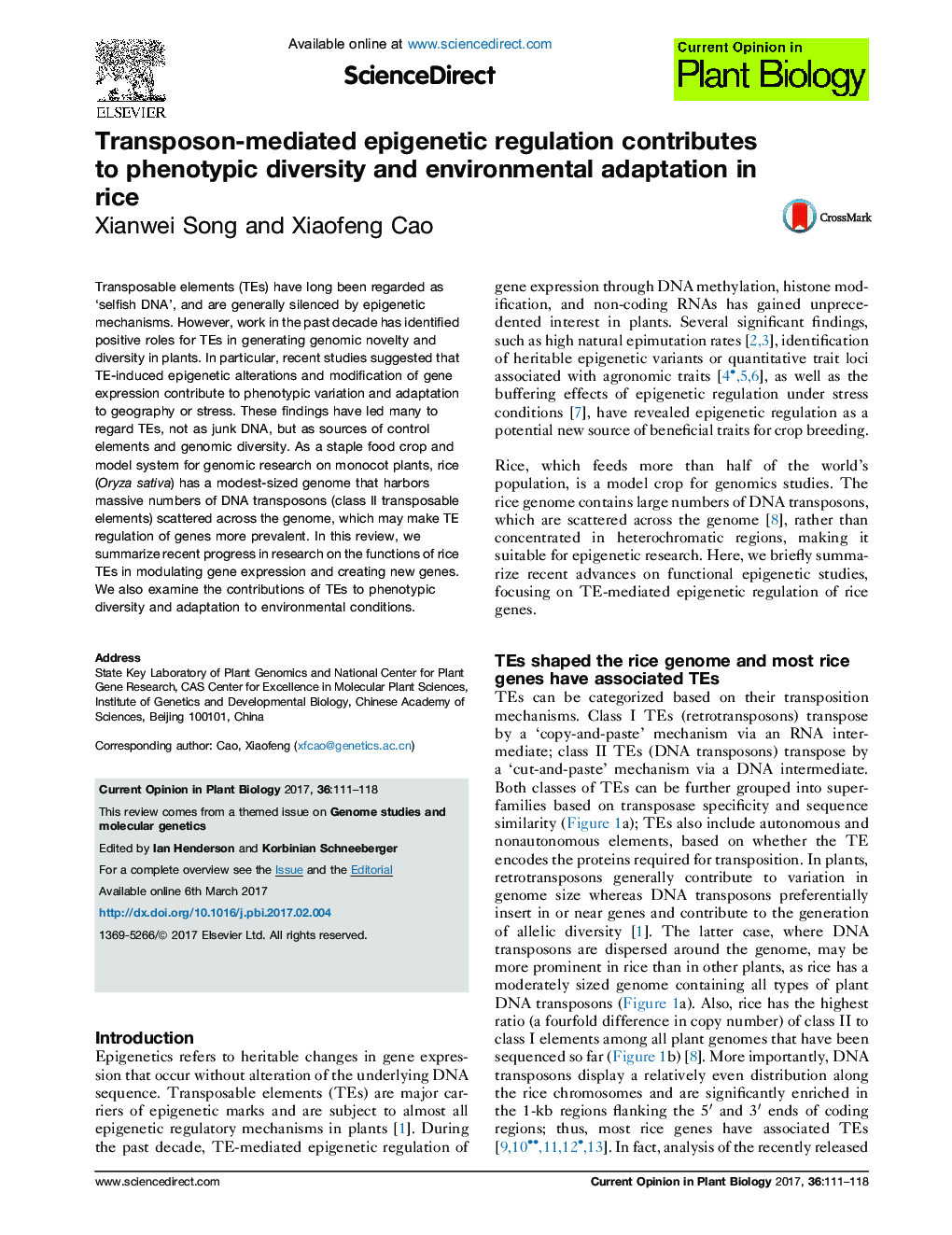| کد مقاله | کد نشریه | سال انتشار | مقاله انگلیسی | نسخه تمام متن |
|---|---|---|---|---|
| 5517464 | 1543199 | 2017 | 8 صفحه PDF | دانلود رایگان |
- Most rice genes are associated with transposable elements (TEs).
- TE-based epigenetic regulation of expression of adjacent genes is prevalent in rice.
- Environmental conditions can activate TEs to generate genetic or epigenetic variations.
- TE-driven variations contributed to rice evolution and northward expansion.
Transposable elements (TEs) have long been regarded as 'selfish DNA', and are generally silenced by epigenetic mechanisms. However, work in the past decade has identified positive roles for TEs in generating genomic novelty and diversity in plants. In particular, recent studies suggested that TE-induced epigenetic alterations and modification of gene expression contribute to phenotypic variation and adaptation to geography or stress. These findings have led many to regard TEs, not as junk DNA, but as sources of control elements and genomic diversity. As a staple food crop and model system for genomic research on monocot plants, rice (Oryza sativa) has a modest-sized genome that harbors massive numbers of DNA transposons (class II transposable elements) scattered across the genome, which may make TE regulation of genes more prevalent. In this review, we summarize recent progress in research on the functions of rice TEs in modulating gene expression and creating new genes. We also examine the contributions of TEs to phenotypic diversity and adaptation to environmental conditions.
Journal: Current Opinion in Plant Biology - Volume 36, April 2017, Pages 111-118
